Elsevier Encyclopedia of Geology - vol I A-E
Подождите немного. Документ загружается.


Figure 6 Anisian-Ladnian,Muschelkalkpalaeogeography.Forlegendsee Figure 16.DetailsofEnclosurefrom Geological Atlas of Western and Central Europe2ndEdition,PeterA.Zeigler,
1990, published by Shell International Petroleum Mij. B.V., distributed by Geological Society Publishing House, Bath.
110 EUROPE/Permian to Recent Evolution
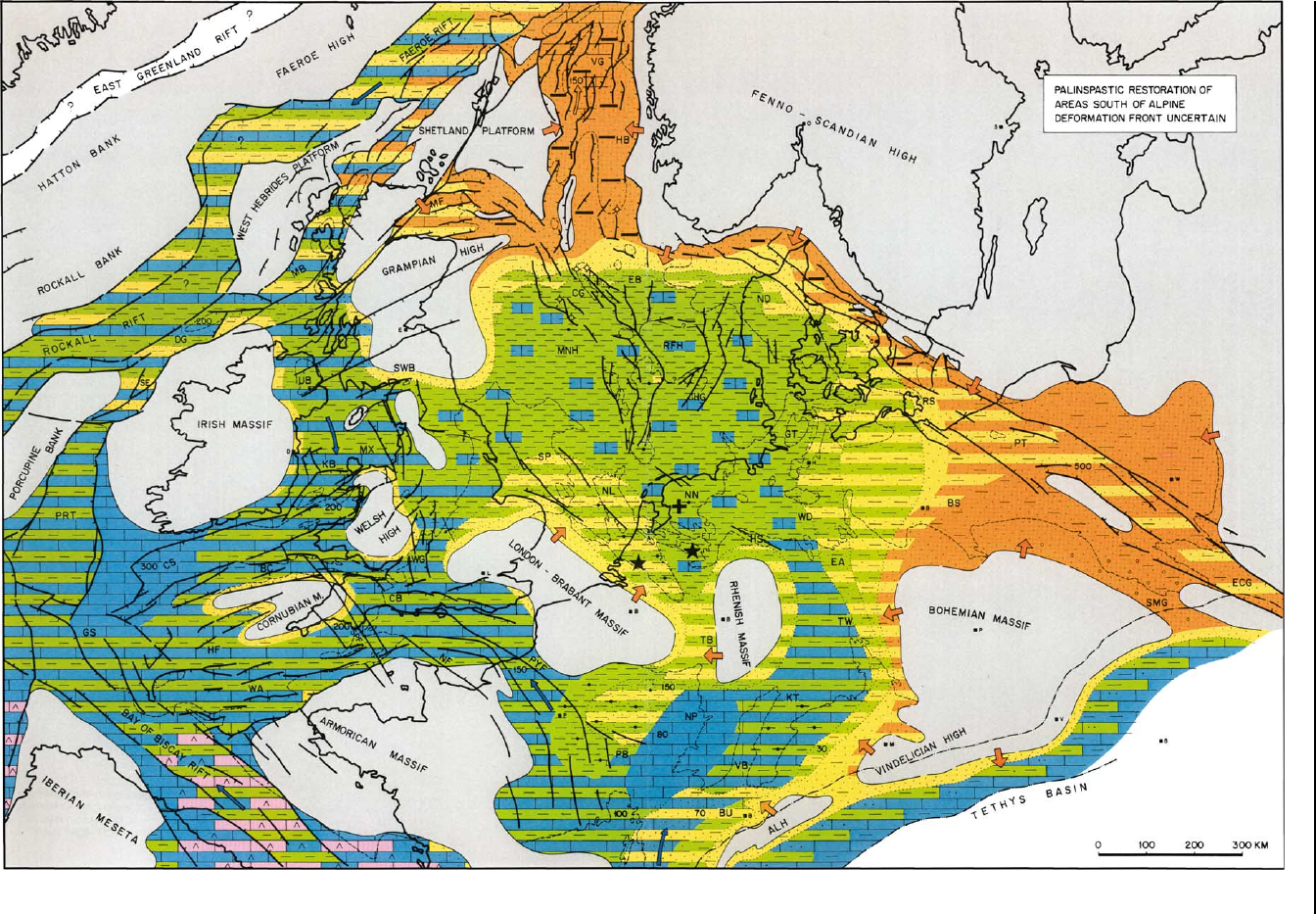
Figure 7 Rhaetian-Hettangianpalaeogeography.Forlegendsee Figure 16.DetailsofEnclosurefrom Geological Atlas of Western and Central Europe 2ndEdition,PeterA.Zeigler,1990,
published by Shell International Petroleum Mij. B.V., distributed by Geological Society Publishing House, Bath.
EUROPE/Permian to Recent Evolution 111
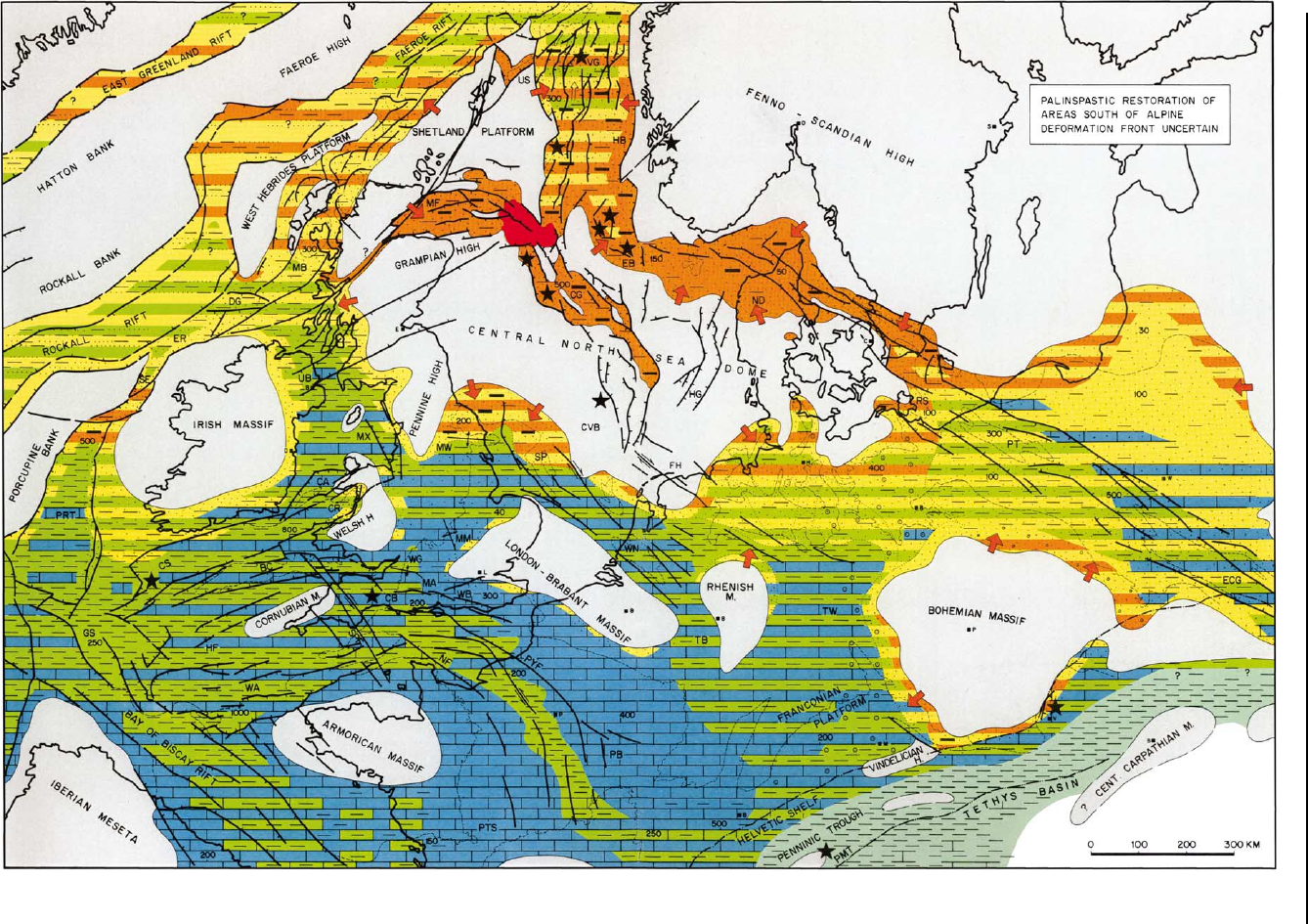
Figure 8 Bajocian-Bathonianpalaeogeography.Forlegendsee Figure 16.DetailsofEnclosurefrom Geological Atlas of Western and Central Europe 2ndEdition,PeterA.Zeigler,1990,
published by Shell International Petroleum Mij. B.V., distributed by Geological Society Publishing House, Bath.
112 EUROPE/Permian to Recent Evolution

during the Callovian, due to the subsidence of the
Central North Sea arch and continued crustal exten-
sion in the North Sea and the Faeroe-Rockall rifts.
During the Middle Jurassic, carbonates prevailed in
basins that were dominated by the Tethyan Seas,
whereas clastics prevailed in basins dominated by
Arctic waters.
Toarcian crustal separation in the Central Atlantic
and Bajocian crustal separation in the Alpine Tethys
caused a change in the stress systems that controlled
the evolution of the WCE rifts. From then on their
evolution was dominated by stresses controlling the
northward propagation of the Atlantic rift system.
During the Late Jurassic and earliest Cretaceous, ac-
celerated crustal extension in the North Sea rift, now
focused on its axial Viking and Central grabens, was
accompanied by the development of sinistral shear
systems at its southern termination which controlled
the subsidence of the transtensional Sole Pit, Broad
Fourteens, West Netherlands, Lower Saxony, and
Sub-Hercynian basins, and the opening of a seaway
cross-cutting the Bohemian Massif (Figures 3 and 9).
This was accompanied by the gradual uplift of a high
that extended from the London-Brabant Massif to the
Bohemian Massif, partly separating the carbonate
shelves of the Paris Basin and Franconian Platform
from the shale and clastic dominated basins of the
North Sea area. Contemporaneous accelerated rifting
activity is also evident in the Western Approaches,
Celtic Sea, and Porcupine troughs that opened into
the Bay of Biscay and North Atlantic rifts. In the
latter, crustal separation between Iberia and the
Grand Banks of Newfoundland progressed gradually
northwards during the Late Jurassic and Early Cret-
aceous. The Late Jurassic cycle of accelerated rifting
and wrench tectonics was associated with only minor
volcanic activity.
In the course of the Late Jurassic, deeper water
conditions were established in the North Sea, Rock-
all-Faeroe, Porcupine, and Bay of Biscay rifts. Or-
ganic-rich Kimmeridgian–Tithonian shales deposited
in these rifts and in flanking shallower water basins
form the principal oil source rocks of the Central and
Northern North Sea, Faeroe rift, and Channel Basin
hydrocarbon provinces.
Early Cretaceous
During the earliest Cretaceous, large parts of the
WCE were uplifted and subjected to erosion in re-
sponse to wrench faulting and stress-induced buck-
ling of the lithosphere, causing a relative low-stand in
sea-level. Deeper marine conditions persisted; how-
ever, in the continuously subsiding Bay of Biscay,
Porcupine, Rockall-Faeroe, and the North Sea rifts.
On the other hand, deltaic to continental clastics were
deposited in the rapidly subsiding transtensional
Channel, Weald, Sole Pit, West Netherlands, Lower
Saxony, and Altmark-Brandenburg basins, as well as
in the Celtic Sea and Western Approaches grabens.
However, the Tethys shelves, of which the Paris Basin
formed an embayment, and the slowly subsiding
North Danish-Polish trough were affected to a lesser
extent by this tectonically-induced relative sea-level
change (Figure 10).
From Neocomian to Albian times, basin margins
were progressively overstepped in response to eusta-
tically rising sea-levels and gradually abating tectonic
activity in the rift- and wrench-induced basins of the
WCE, whilst crustal extension progressively focused
on the zone of future crustal separation between
Europe and Greenland. With the onset of post-rift
thermal subsidence, the North Sea Basin gradually
expanded (Figure 11). Nevertheless, minor tectonic
activity was still evident until Aptian times in the
North Sea, the Sole Pit, Broad Fourteens, West Neth-
erlands, Lower Saxony, and Sub-Hercynian basins, as
well as along the Fennoscandian Border Zone and the
border faults of the Bohemian Massif. Following
Aptian crustal separation in the Bay of Biscay, the
grabens on the Western Shelves became inactive and
began to subside thermally. During the Early Cret-
aceous volcanic activity in the WCE was rather
limited.
During the Neocomian, the North Sea Basin was
partly separated from the Tethys by the wrench-in-
duced Brabant-Rhenish-Bohemian high, and from
the Atlantic by a high that extended from Ireland via
Scotland to the Shetland Isles. However, in the course
of the Aptian and Albian, shallow marine communi-
cations were reopened between the North Sea Basin
and the Tethys and Western shelves via southern Eng-
land and the Paris Basin. Throughout the Early Cret-
aceous, the WCE basin system was clastic-dominated
except for the Armorican margin on which carbonates
were deposited.
Late Cretaceous–Paleocene Rifting
and Early Alpine Intraplate
Compression
During the Late Cretaceous and Paleocene, rifting
activity was centred on the Faeroe-Rockall Trough
and the area between the Rockall-Hatton Bank and
Greenland. Limited sea-floor spreading may have oc-
curred in the southern parts of the Rockall Trough
during the Cenomanian–Santonian. During the Cam-
panian–Maastrichtian, the long-lived Iceland plume
impinged on the Arctic-North Atlantic rift system,
EUROPE/Permian to Recent Evolution 113
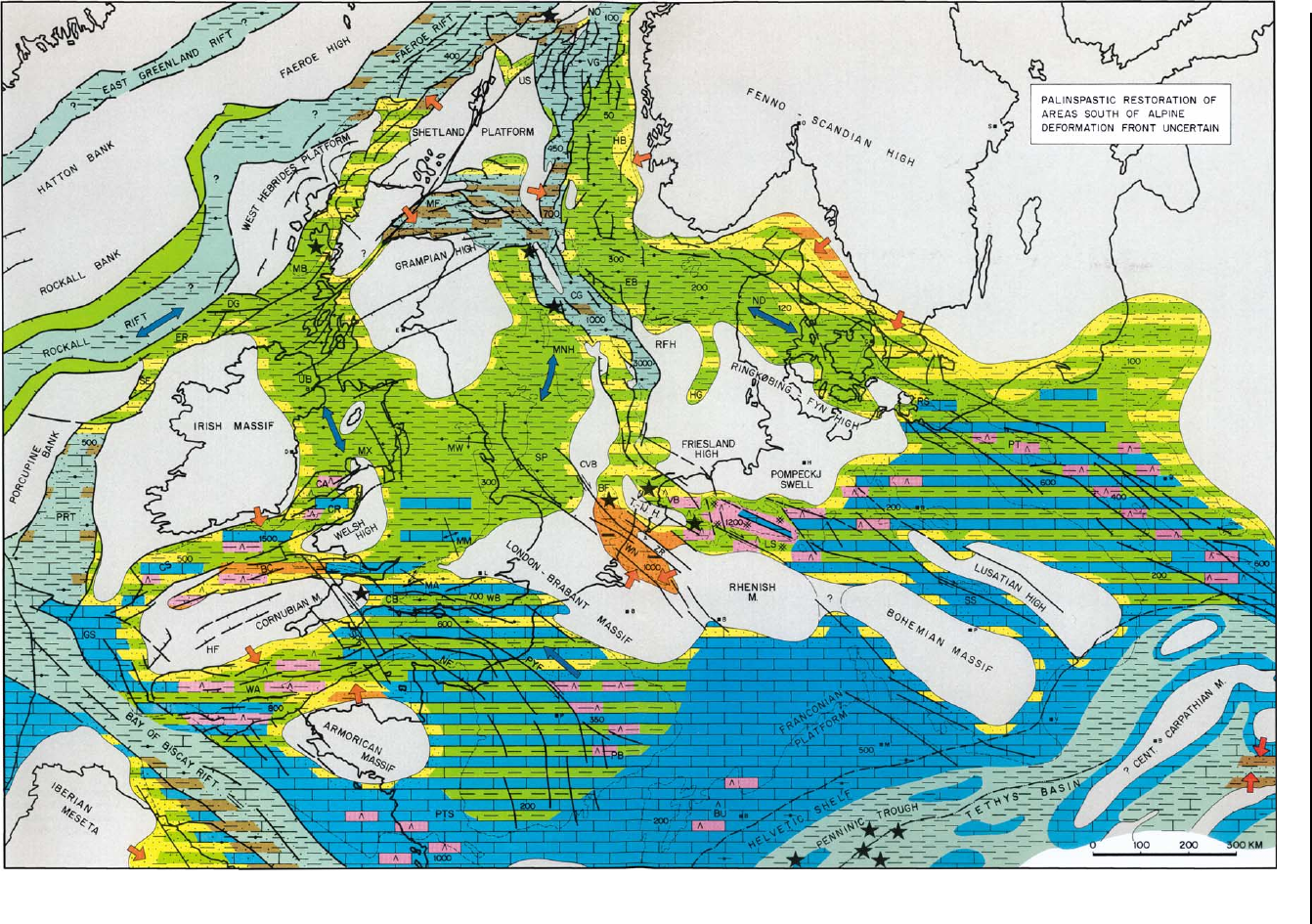
Figure 9 Kimmeridgian/Tithonianpalaeogeography.Forlegendsee Figure 16.DetailsofEnclosurefrom Geological Atlas of Western and Central Europe2ndEdition,PeterA.Zeigler,1990,
published by Shell International Petroleum Mij. B.V., distributed by Geological Society Publishing House, Bath.
114 EUROPE/Permian to Recent Evolution
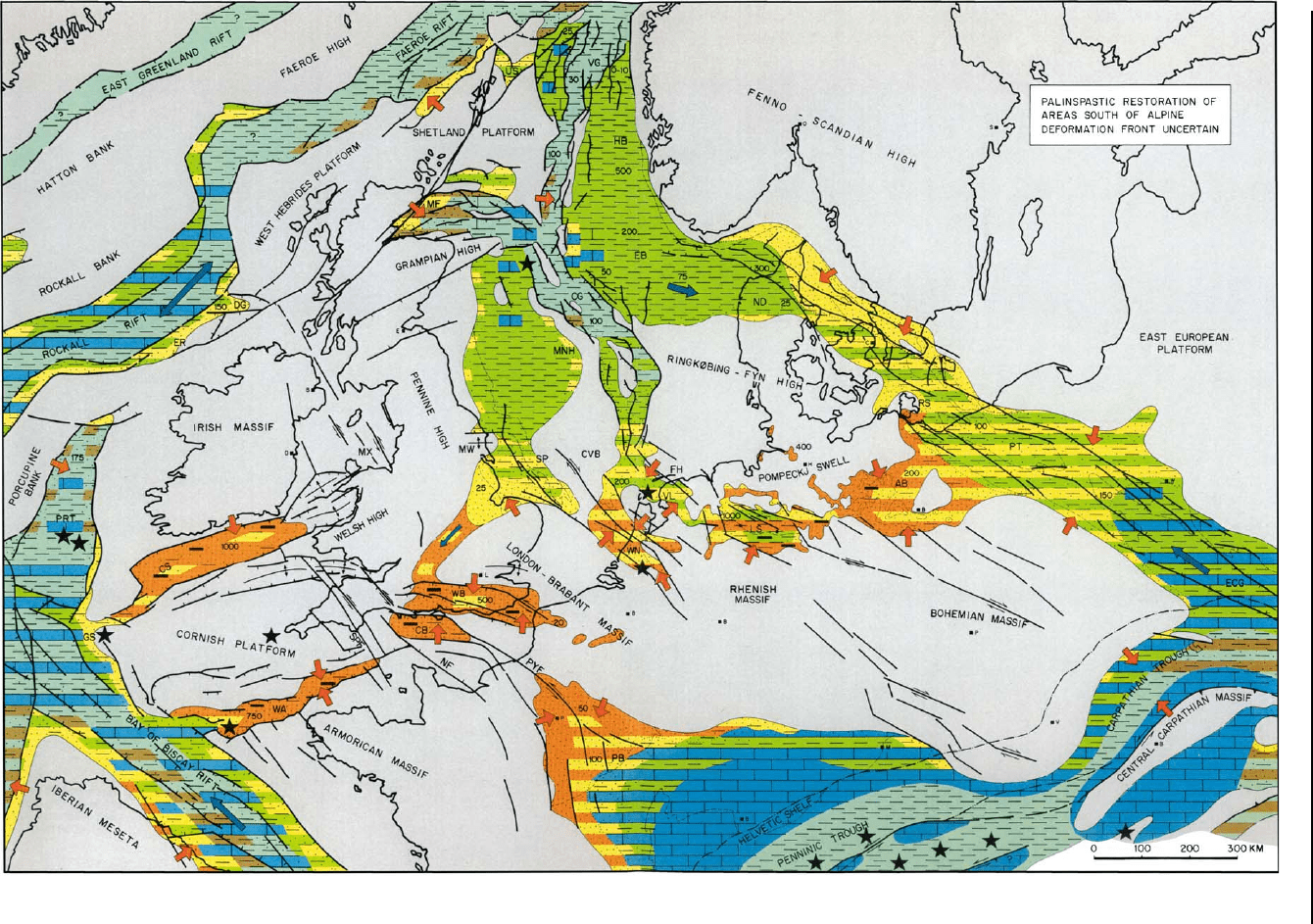
Figure 10 Berriasian-Valanginianpalaeogeography.Forlegendsee Figure 16.DetailsofEnclosurefrom Geological Atlas of Western and Central Europe2ndEdition,PeterA.Zeigler,1990,
published by Shell International Petroleum Mij. B.V., distributed by Geological Society Publishing House, Bath.
EUROPE/Permian to Recent Evolution 115
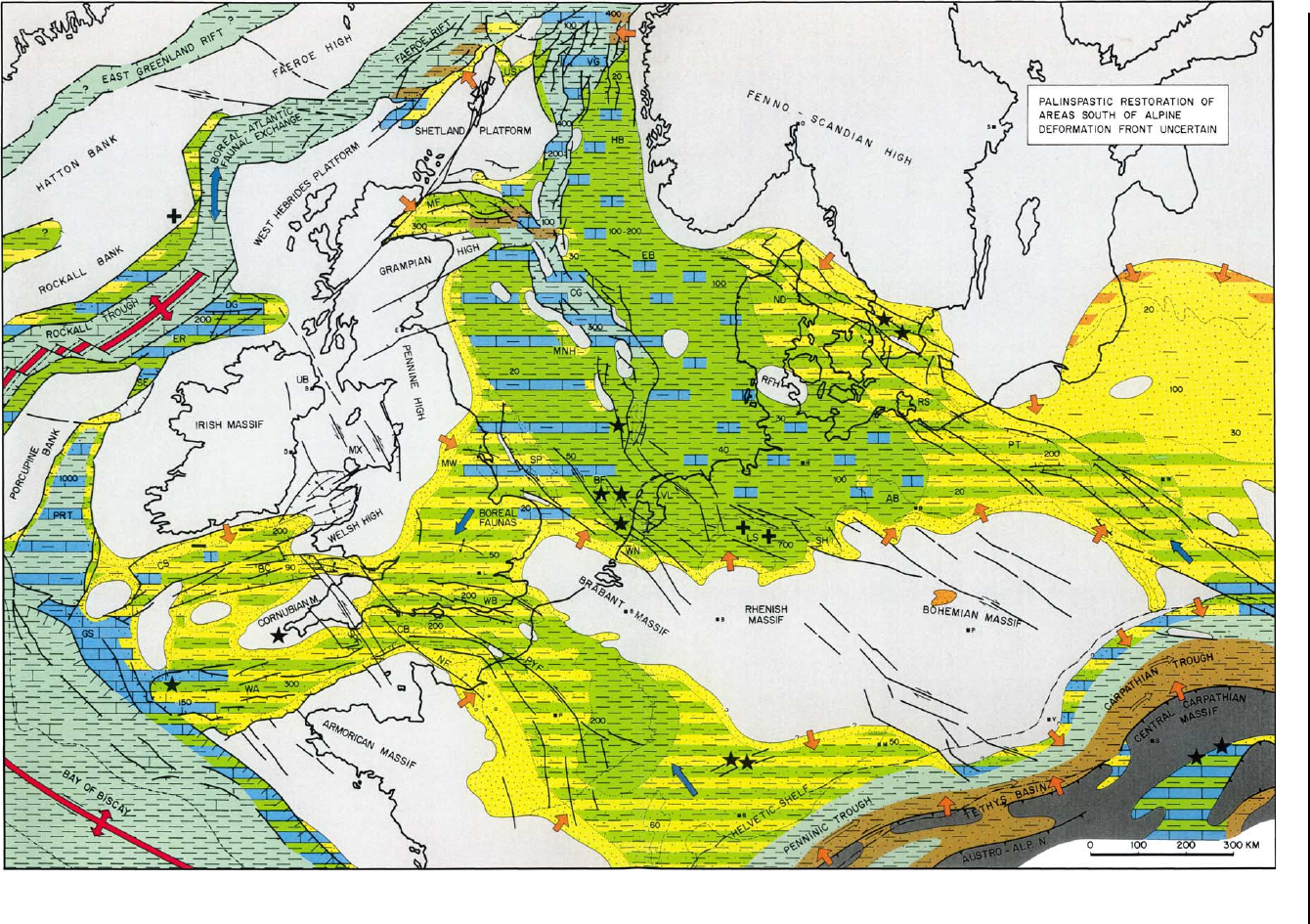
Figure 11 Aptian-Albianpalaeogeography.Forlegendsee Figure 16.DetailsofEnclosurefrom Geological Atlas of Western and Central Europe2ndEdition,PeterA.Zeigler,1990,publishedby
Shell International Petroleum Mij. B.V., distributed by Geological Society Publishing House, Bath.
116 EUROPE/Permian to Recent Evolution

giving rise to the development of the large Thulean
flood basalt province that had, during the Paleocene,
a radius of more than 1000 km. At the Paleocene–
Eocene transition, crustal separation was achieved
between Greenland and Europe to the west of the
Rockall-Hatton Bank and in the Norwegian-
Greenland Sea, paving the way for opening of the
Arctic-North Atlantic Ocean.
During the Turonian–Santonian, Africa began to
converge with Europe in a counter-clockwise rota-
tional mode. Ensuing space constraints within the
Tethyan belt were compensated by the activation of
new subduction zones and the onset of closure of the
Alpine Tethys and the Bay of Biscay.
Late Cretaceous
Late Cretaceous regional thermal subsidence of the
North Sea Basin, the Polish Trough, the Paris Basin,
and the Tethys shelves, as well as of the Western
Shelves, combined with cyclically rising sea-levels,
accounted for broad overstepping of the Mid-Cret-
aceous basin margins. This caused a drastic reduction
of clastic supply to these basins in which sedimenta-
tion became carbonate-dominated from Cenomanian
times onward. By end-Cretaceous times, much of the
WCE was covered by the ‘Chalk’ sea, water depths of
which ranged from neritic to bathyal, as evident in the
axial parts of the North Sea Basin (Figure 12).
However, commencing in Late Turonian times,
compressional stresses were exerted on the southern
margin of the WCE, causing inversion of Mesozoic
tensional basins and upthrusting of basement blocks
by reactivation of pre-existing crustal discontinuities
(Figure 3). The intra-Senonian pulse of intraplate
compression, which affected the Polish Trough, the
Fennoscandian Border Zone, the Bohemian Massive,
the Sub-Hercynian, Lower Saxony, West Nether-
lands, and the Sole Pit Basins, as well as the southern
parts of the North Sea rift, can be related to compres-
sional stresses which were projected from the Alpine-
Carpathian orogenic wedge through the oceanic
lithosphere of the Alpine Tethys into the lithosphere
of WCE. From the uplifted basement blocks of the
Bohemian Massif and the Polish inversion axis, clas-
tics began to be shed into the surrounding Chalk seas
(Figure 12).
Paleocene
The second, more intense, Paleocene phase of intra-
plate compression, which affected about the same
areas, and to a lesser degree also the Tethys shelves
of the Western and Central Alps, the Paris Basin and
the Channel area, probably marks the collision of
the Alpine-Carpathian orogenic wedge with its East
Alpine-Carpathian foreland and with the Brianc¸on-
nais Terrane in the West and Central Alpine domain
(see Europe: The Alps). The most distal intraplate
compressional structures occurred at a distance of
some 1500 km to the north-west of the contemporary
collision front. The Paleocene phase of foreland com-
pression, during which a Rocky Mountain-type array
of basement blocks was upthrusted in the Bohemian
Massif and the Polish Trough was deeply inverted,
involved also broad lithospheric folding, causing a
regional regression, the disruption of the Late
Cretaceous carbonate platforms, and accelerated sub-
sidence of the North Sea Basin. Combined with
plume-related thermal doming of the British Isles
during the development of the Thulean flood basalt
province, sedimentation in the North Sea Basin
changed at the end of the Danian from carbonates
to clastics. At the same time, this basin became isol-
ated from the Tethys and Atlantic seas but remained
open to the Norwegian-Greenland Sea (Figure 13).
On the other hand, mixed carbonate-clastic envir-
onments persisted on the Western Shelves, that were
not affected by this pulse of intraplate compression.
However, Paleocene clastic influx into the Paris Basin
from southern sources is probably related to the uplift
of the Armorican-Massif Central arch in response
to compressional stresses that were exerted on the
shelves of Southern France during the early phases
of the Pyrenean orogeny that had commenced during
the Senonian. This is compatible with the Paleocene-
Eocene development of the Languedoc-Provenc¸al
fold-and-thrust belt of Southern France, that involved
inversion of Mesozoic extensional basins.
Paleocene intrusion of mafic dykes in the Massif
Central, Vosges, Black Forest, and the Bohemian
Massif, which must be related to partial melting of
the lithospheric thermal boundary layer, probably
reflected a mantle plume-related increase in the po-
tential temperature of the asthenosphere, resulting in
a renewed destabilization of the lithosphere. On the
other hand, Paleocene compressional inversion of the
Polish Trough and upthrusting of basement blocks in
the Bohemian Massif apparently caused thickening of
the crust (Figure 2).
Opening of the Arctic–North Atlantic
and Collisional Interaction of the
Alpine Orogen with its Foreland
With the Early Eocene onset of sea-floor spreading in
the Arctic-North Atlantic, volcanic activity ceased
on the shelves of the British Isles and the Rockall-
Hatton-Faeroe Bank. With this, their post-rift thermal
subsidence commenced, whilst thermal subsidence
EUROPE/Permian to Recent Evolution 117
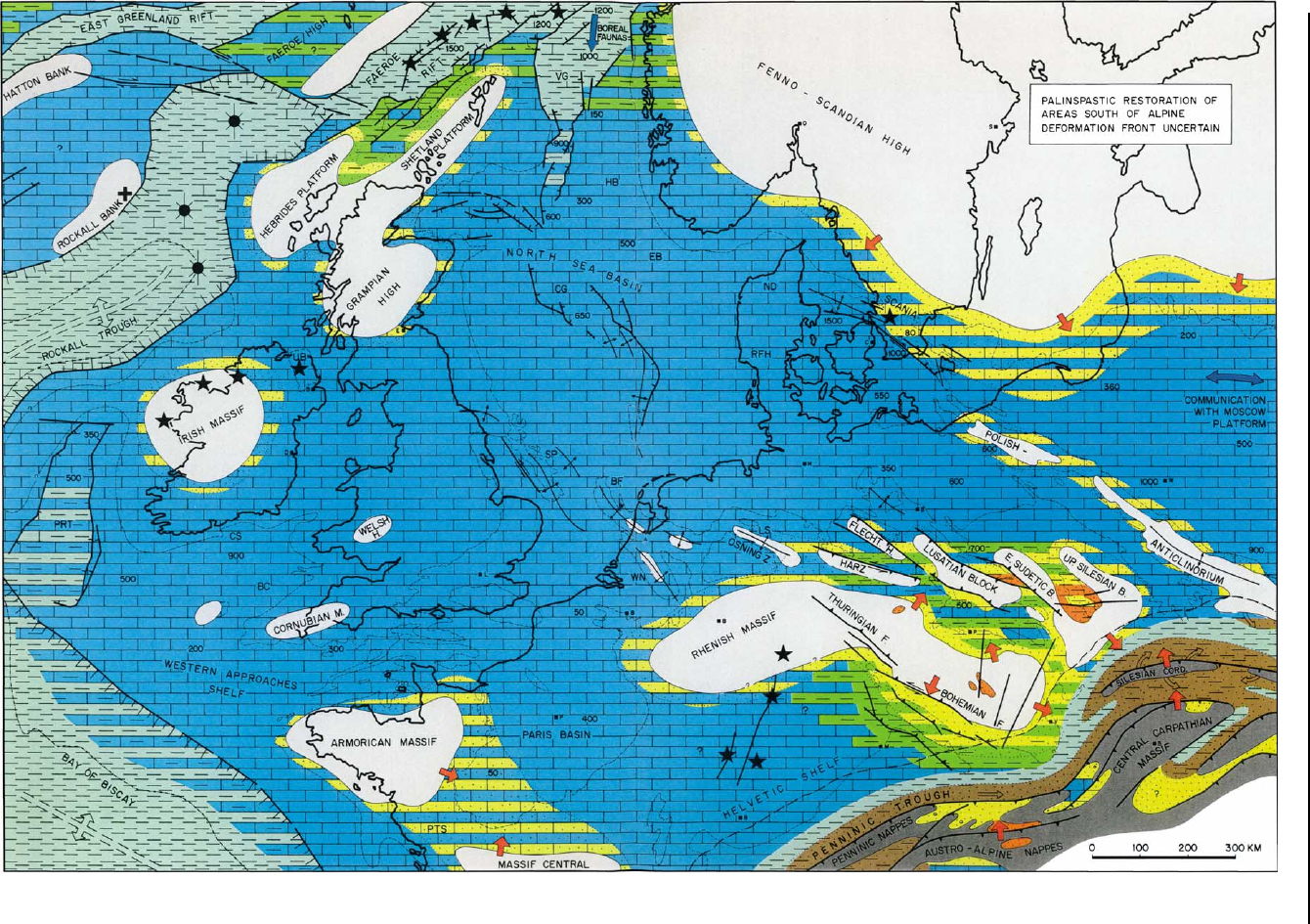
Figure 12 Senonian-Danianpalaeogeography.Forlegendsee Figure 16.DetailsofEnclosurefrom Geological Atlas of Western and Central Europe 2ndEdition,PeterA.Zeigler,1990,
published by Shell International Petroleum Mij. B.V., distributed by Geological Society Publishing House, Bath.
118 EUROPE/Permian to Recent Evolution
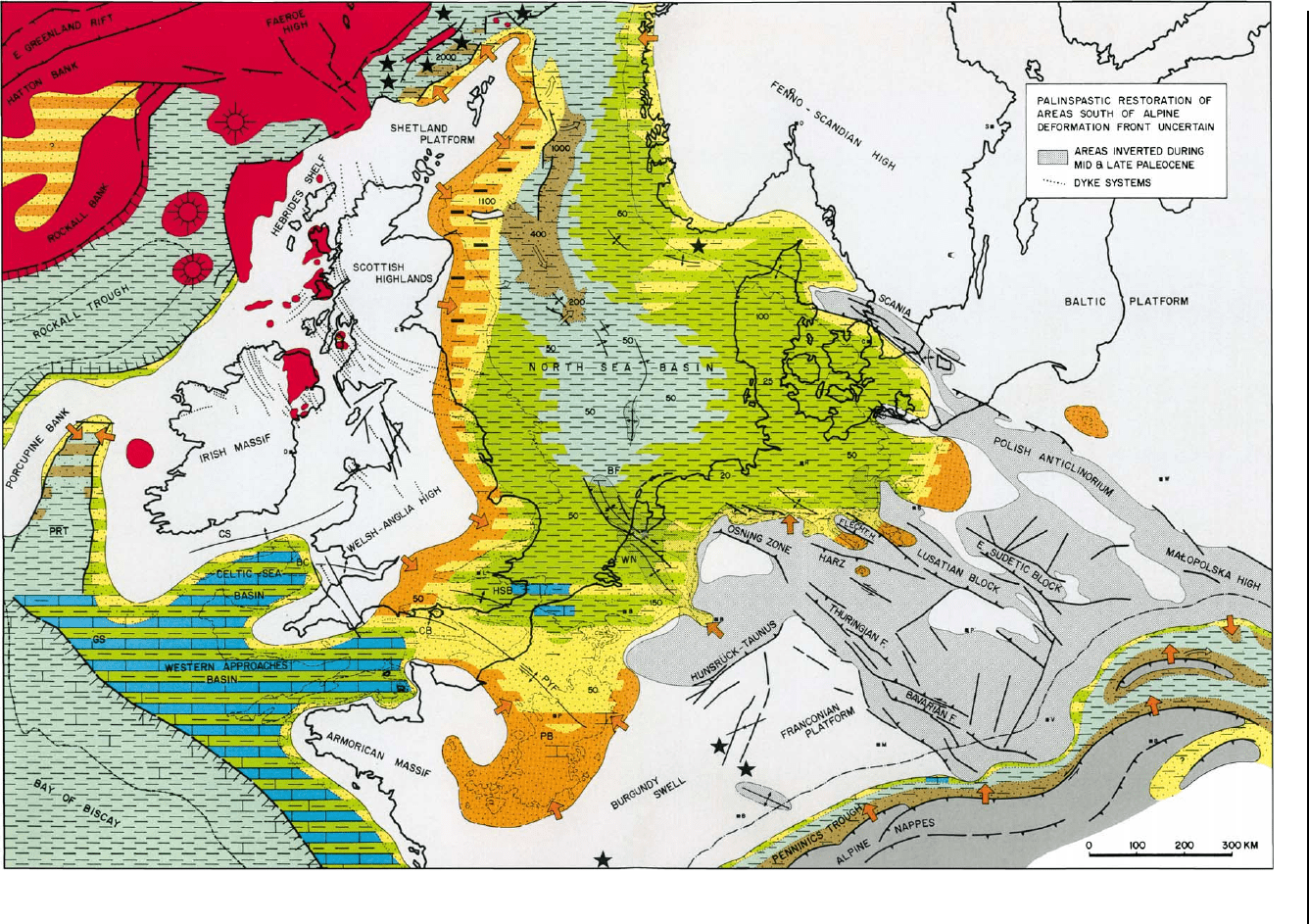
Figure 13 LatePaleocenepalaeogeography.Forlegendsee Figure 16.DetailsofEnclosurefrom Geological Atlas of Western and Central Europe2ndEdition,PeterA.Zeigler,1990,published
by Shell International Petroleum Mij. B.V., distributed by Geological Society Publishing House, Bath.
EUROPE/Permian to Recent Evolution 119
